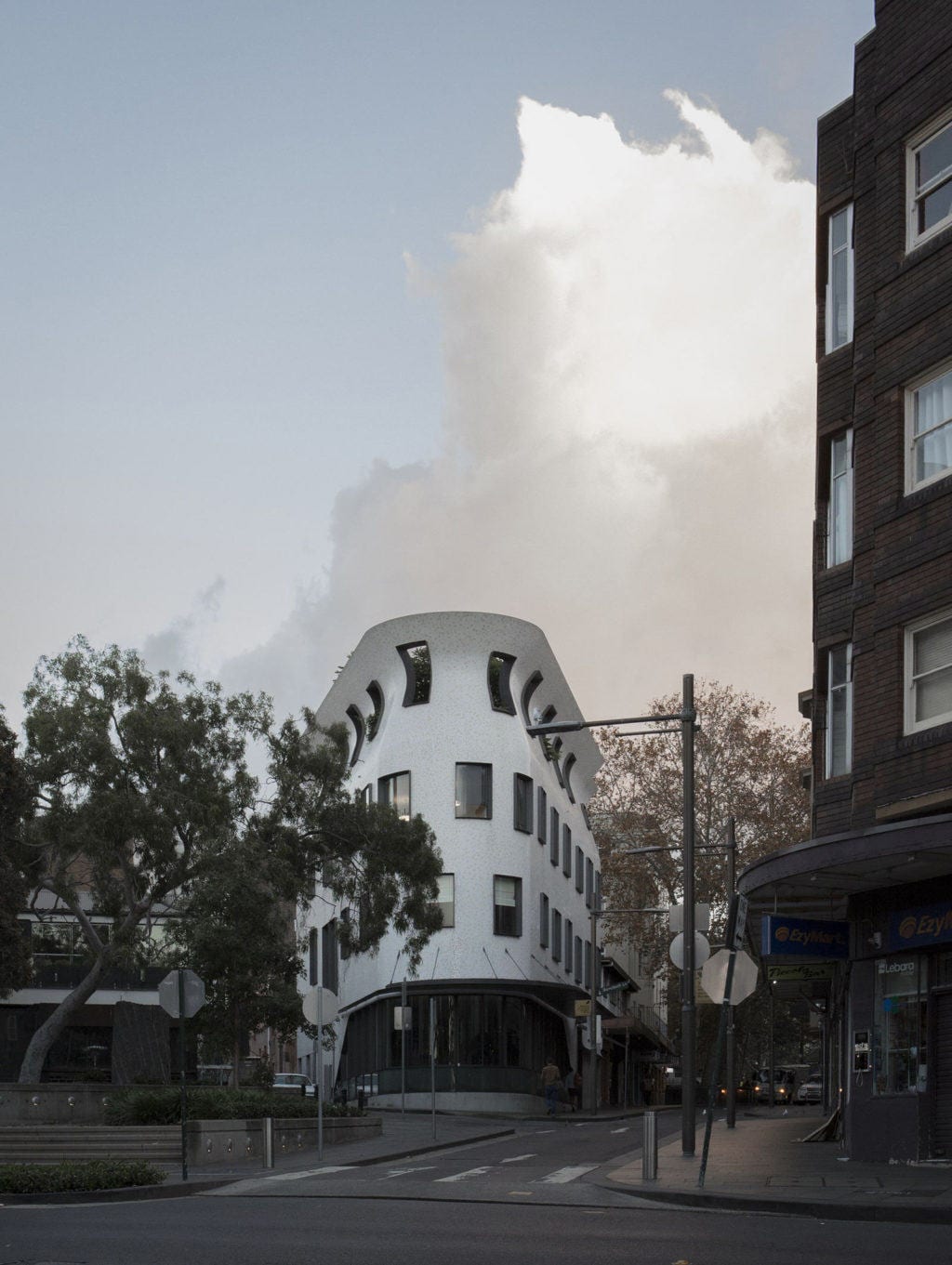The building is located in a triangular shaped site with less than 200 m2 in size. The rounded end looks directly onto a small public space and the shape of the site exaggerates perspective because the tiny footprint amplifies the perception of height.
We wanted the building to sit easily in its place, to recognize the architectural traits of its neighbors. We also wanted to take a new view of the thick masonry walls, small detailed windows and overhanging cornices typical of the area. The fine steel lined windows are slightly offset and casually misaligned. The awning splits to mark individual entry points on the street. On the street, it seems an ephemeral version of the neighborhood buildings, the rhythm held by the openings as the wall recedes. Then, at the corner the building shifts to being strongly surfaced, curving in two directions, becoming a peninsular of moulded light with an exotic roof top garden of frangipani trees and seasonal plantings, framed in the sky through buckled openings.

